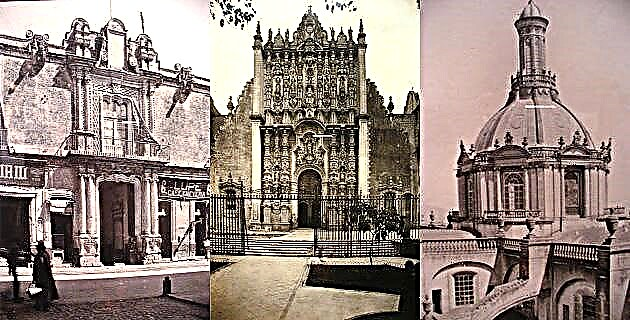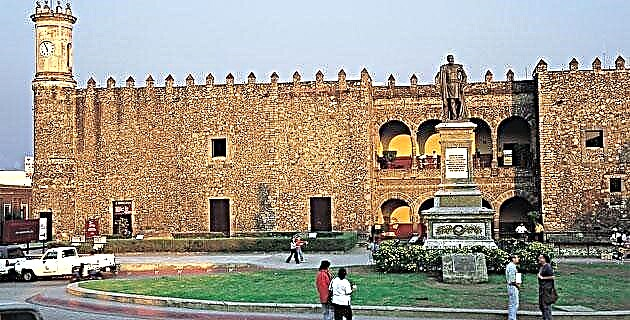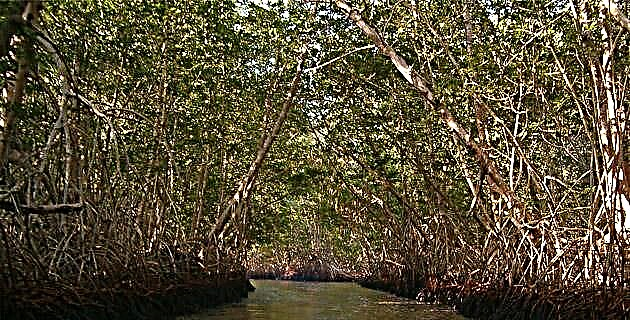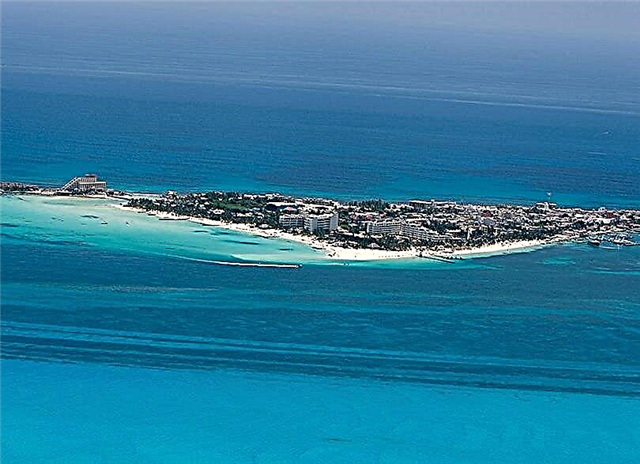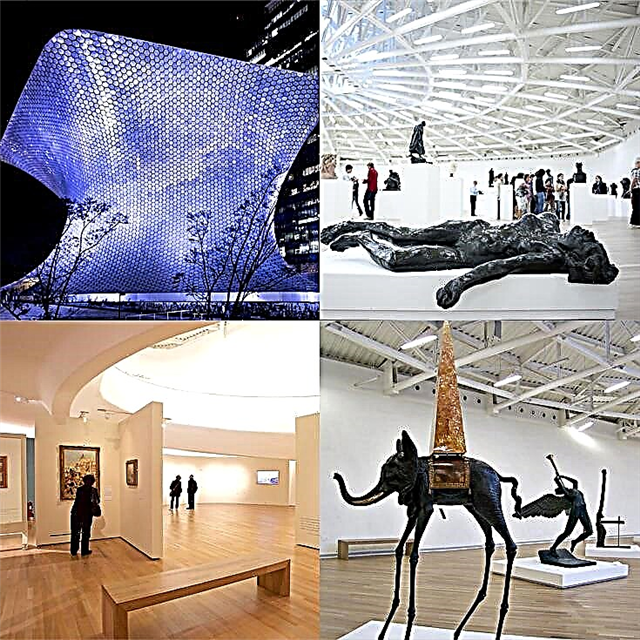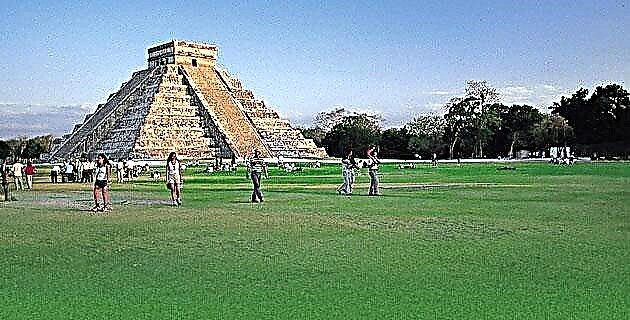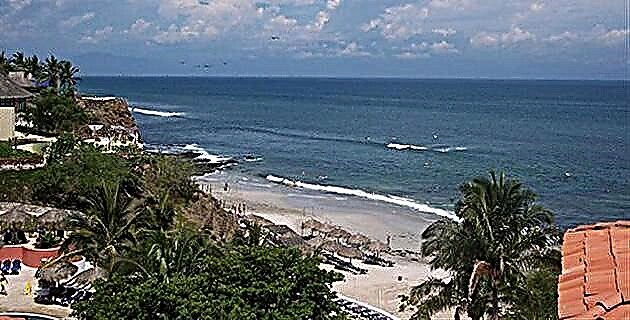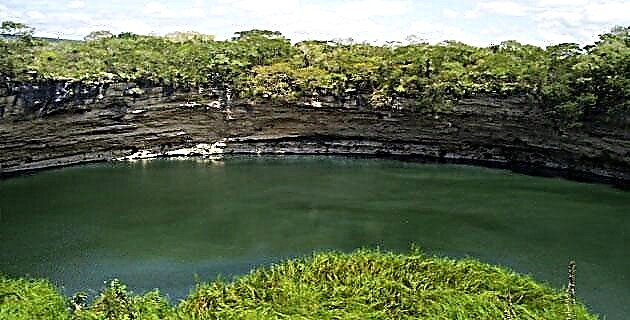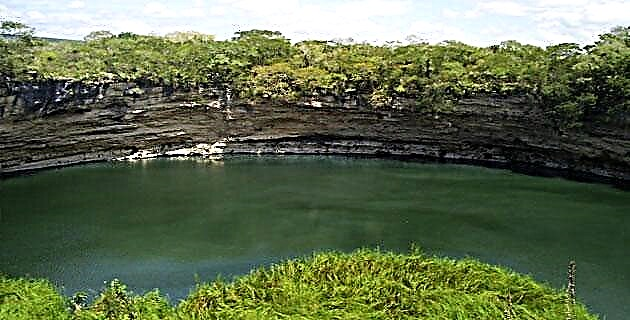
Tamaulipas holds surprises for lovers of hiking and nature.
Beautiful natural settings in arid or jungle, temperate or tropical landscapes; incredible trails that lead to placid rivers, transparent springs, impressive basements, caves and mysterious cenotes. Cenotes in Tamaulipas? Although this may surprise most readers, these are not exclusive to the Yucatan peninsula; We also find them in a small piece of land in Tamaulipas where they are commonly known as "pools".
The word mayad’zonot (cenote), means “hole in the ground” and designates a natural well from permeable calcareous soils particularly susceptible to leaching (a process followed by water to dissolve minerals and rocks). In this case, it is limestone rock, which causes the formation of huge underground cavities; In the cenotes, the roof of these flooded caverns weakens and collapses, revealing a wide mirror of water between rocky walls.
There are only a few cenotes in Tamaulipas, located in the southeastern portion of the state, in the municipality of Aldama, about 12 km west of the municipal seat; However, it is possible to affirm that, due to their magnitude and depth, they far surpass the Yucatecans.
SOME HISTORICAL BACKGROUND
In the Report on the colony of Nuevo Santander and Nuevo Reino de León (1795), Félix María Calleja, a famous military realist and viceroy of New Spain in the years of insurgency, said: “northwest of the Villa de las Presas del Rey ( today Aldama) there is a large lighted cave with natural skylights; and 200 varas distant from this cave, a deep cavity in which there is a lake on which an island of grass floats at all times, and whose bottom is unfathomable from above ”.
In 1873 the engineer Alejandro Prieto, historian and governor of Tamaulipas, included in his History, geography and statistics of the state of Tamaulipas an article written by his father, Ramón Prieto, entitled "The hot springs of La Azufrosa", in which he makes a detailed description the Zacatón pool, and three other pools known at that time as the Baños de los Baños, the Murcielagos and the Alameda pools; makes some guesses about the formation of these magnificent sinkholes, and comments on the wholesomeness, healing properties and sulfurous origin of its hot springs. It also refers to the existence of an underground excavation or gallery, the pool of Los Cuarteles, which leads to a little-known cave.
THE POZA DEL ZACATÓN
Excited with the idea of exploring these extraordinary natural formations, we left Ciudad Mante towards the municipality of Aldama; Two hours later we arrived at the El Nacimiento ejidal community, the starting point of the tour through the cenotes. Rafael Castillo González kindly offered to accompany us as a guide. In the place known as "birth of the river", we find a peaceful and beautiful riverside setting, surrounded by palm trees, ideal for a day of recreation; the Barberena river (or Blanco, as the locals know it), seems to be born from a thick vegetation of large trees and it is not possible to see with the naked eye the exact point where the spring emerges.
We walk around a barbed wire boundary and begin to climb a steep but short slope until we reach the top of a plain that preserves trees, bushes, and mounts, typical of the region's low spiny deciduous forest; We follow our guide for a little over 100 m until finally, and almost without realizing it, we reach the edge of the impressive Zacatón pool. We were astonished at the sight of such a natural wonder, and only the joyous commotion of a flock of quila — small parakeets of the genus Aratinga — distracted the solemn stillness of the place.
The Zacatón pool has the classic shape of cenotes: a huge open cavity 116 m in diameter, with vertical walls that touch the surface of the water about 20 m below the level of the surrounding terrain; the vault that once covered it completely collapsed and formed an almost perfect natural cylinder. Its calm waters, of a very dark green color, give the appearance of being stagnant; However, 10 m below there is a natural tunnel 180 m long that connects the pool with the source of the river, and through which underground currents flow. It is so called because on the surface of the water there is a floating islet of grass that moves from one shore to the other, perhaps because of the wind or the imperceptible circulation of the water.
On April 6, 1994, Sheck Exley, the world's best cave diver (he set two depth marks: 238 m in 1988 and 265 m in 1989) plunged into the waters of the Zacatón, together with his partner Jim Bowden, to try breaking the 1,000-foot (305-m) depth mark for the first time - unfortunately some trouble occurred and he drowned at 276 meters. The Zacatón pool, the deepest flooded cavity discovered to date, appeared to be the “bottomless abyss” that all cave divers longed to explore. This was what sparked Sheck Exley's passion. But sadly, the best cave divers in the world died in the deepest abyss on the planet.
THE GREEN WELL
Of much greater diameter than that of the Zacatón, it does not have the appearance of the classic cenote; the walls that surround it do not collapse and are covered by dense vegetation where we can only distinguish the unmistakable palms of Sabal mexicana. It gave us the impression of having discovered a mysterious lake, lost in the depths of an exotic and humid tropical forest. We descended a few meters down a not very steep slope to the only "beach" of firm limestone rock that exists on the perimeter of the pool; the water is blue-green in color and much clearer than that of Zacatón.
Our next stop was at a small natural pond known as La Pilita, located in a gentle depression in the terrain; the diameter of this pool is very small and the water is almost at ground level. We continue towards La Azufrosa; It is the only place where the sulfurous origin of the water is evident: milky turquoise blue, hot to the touch and a constant bubbling on the surface. People go there to bathe to take advantage of the healing properties of the unique natural pool.
THE CAVE OF THE CUARTELS
A little before reaching this cave we notice a good number of "holes" or small openings in the ground that communicate with the interior; Upon reviewing them, we appreciate that the thickness of the limestone rock is about a meter so we were literally walking "in the air". We enter the cave through one of its entrances and marvel at the unusual spectacle: a huge underground gallery illuminated by natural skylights through which the strong trunks and roots of the higerones (Ficus sp.) Penetrate that seek the humid interior of the cavern . Most of these skylights are a few meters in diameter, but there are also great subsidence, due to the collapse of the roof, where a unique forest of stones and trees has developed; nature has created fantastic surreal architecture here that is worth admiring.
AL GUNAS REFLECTIONS
It can be assumed that all the pools communicate underground; However, they differ in the color, transparency and sulfur content of their waters, perhaps due to the existence of different aquifers, each with different water quality, which are subsequently mixed in a single stream that flows towards their reciprocal drainage. at the source of the river. What is not easy to explain is the incredible depth, estimated at 1080 feet (330 m), that the Zacatón pool reaches. Only what Don Ramón Prieto expressed in the last century comes to mind: “In the waters of La Azufrosa, everything is different, everything is great and extraordinary. The pools that we have described and the immense flow of water exposed to the gaze of all, seem strange to the noise of the stream that forms its drain. Apparently dead or asleep, they have had the necessary strength to break the layer of stone that covered them and, ashamed of their imprisonment, they said: we will see the light, and the light was made for them. "
IF YOU GO TO LOS CENOTES DE ALDAMA
Leaving from the city and port of Tampico, Tamaulipas, follow the national highway no. 80 that takes us to Ciudad Monte; 81 km later, at Manuel Station, take the detour onto highway no. 180 that goes towards Aldama and Soto la Marina; Travel approximately 26 km and at this point (10 km before reaching Aldama) turn left on a paved road, about 12 km long, that leads to the ejido. The birth. This site does not have tourist services, but you can find them in the nearby town of Aldama, or in the city of Tampico.
Source: Unknown Mexico No. 258 / August 1998


